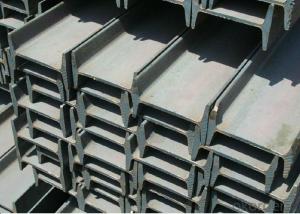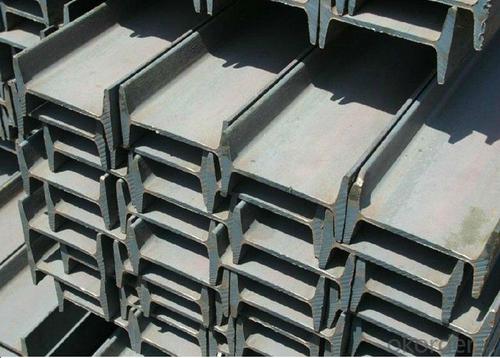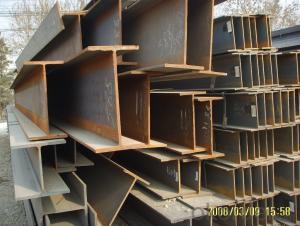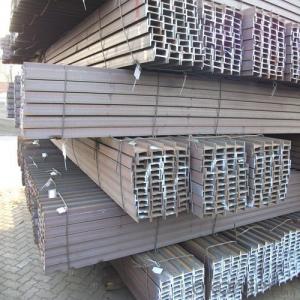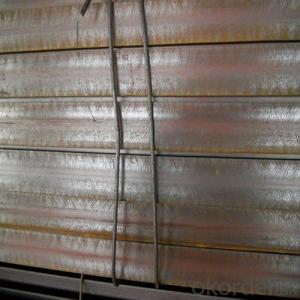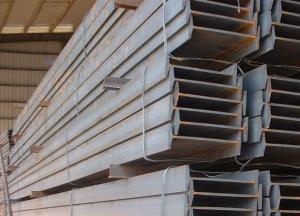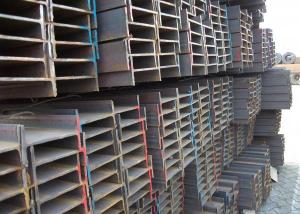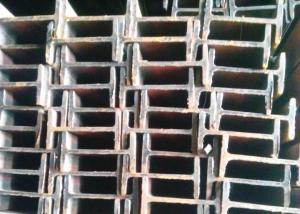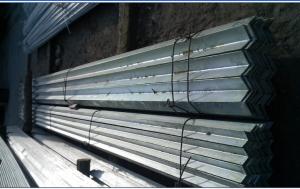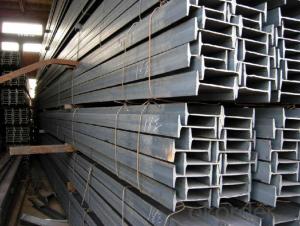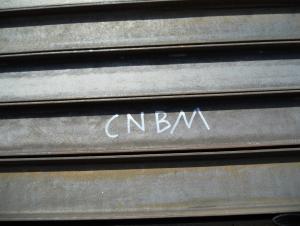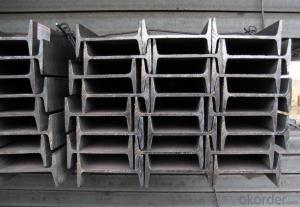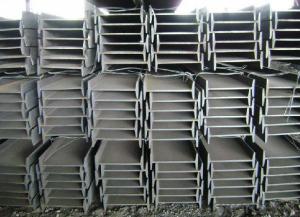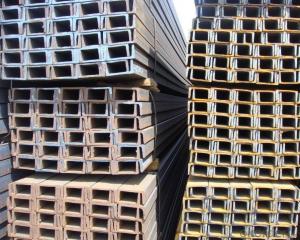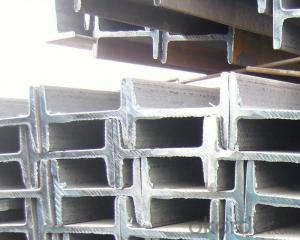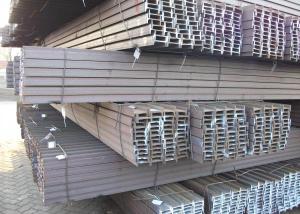Steel I-Beam with Good Quality and Price from China
- Loading Port:
- Tianjin
- Payment Terms:
- TT OR LC
- Min Order Qty:
- 25 m.t
- Supply Capability:
- 10000 m.t/month
OKorder Service Pledge
OKorder Financial Service
You Might Also Like
Specification
Okorder.com is a professional materials & equipment supplier & manufacturer, offers integrated one-stop services including real-time quoting and online cargo tracking. We are funded by CNBM Group, a Fortune 500 enterprise and the largest materials & equipment firm in China.
Product Applications:
IPE/IPEAA Beam Steel are widely used in various construction structures, bridges, autos, brackets, mechanisms and so on.
Product Advantages:
OKorder's Steel I-Beams are durable, strong, and resist corrosion.
Main Product Features:
· Premium quality
· Prompt delivery & seaworthy packing (30 days after receiving deposit)
· Corrosion resistance
· Can be recycled and reused
· Mill test certification
· Professional Service
· Competitive pricing
Product Specifications:
1. Product name: IPE/IPEAA Beam Steel
2. Standard: EN10025, GB Standard, ASTM, JIS etc.
3. Grade: Q235B, A36, S235JR, Q345, SS400 or other equivalent.
4. Length: 5.8M, 6M, 9M, 10M, 12M or as your requirements
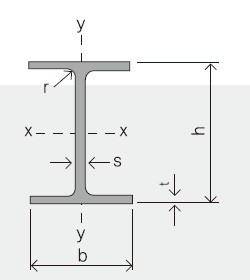
Section | Standard Sectional Dimensions(mm) | ||||
h | b | s | t | Mass Kg/m | |
IPE80 | 80 | 46 | 3.80 | 5.20 | 6.00 |
IPE100 | 100 | 55 | 4.10 | 5.70 | 8.10 |
IPE120 | 120 | 64 | 4.80 | 6.30 | 10.40 |
IPE140 | 140 | 73 | 4.70 | 6.90 | 12.90 |
IPE160 | 160 | 82 | 5.00 | 7.40 | 15.80 |
IPE180 | 180 | 91 | 5.30 | 8.00 | 18.80 |
IPE200 | 200 | 100 | 5.60 | 8.50 | 22.40 |
IPE220 | 220 | 110 | 5.90 | 9.20 | 26.20 |
IPE240 | 240 | 120 | 6.20 | 9.80 | 30.70 |
IPE270 | 270 | 135 | 6.60 | 10.20 | 36.10 |
IPEAA80 | 80 | 46 | 3.20 | 4.20 | 4.95 |
IPEAA100 | 100 | 55 | 3.60 | 4.50 | 6.72 |
IPEAA120 | 120 | 64 | 3.80 | 4.80 | 8.36 |
IPEAA140 | 140 | 73 | 3.80 | 5.20 | 10.05 |
IPEAA160 | 160 | 82 | 4.00 | 5.60 | 12.31 |
IPEAA180 | 180 | 91 | 4.30 | 6.50 | 15.40 |
IPEAA200 | 200 | 100 | 4.50 | 6.70 | 17.95 |
5.Color marking: There will be color marking on both end of the bundle for the cargo delivered by bulk vessel. That makes it easily to distinguish at the destination port.
Tag mark: there will be tag mark tied up on the bundles. The information usually including supplier logo and name, product name, made in China, shipping marks and other information request by the customer.
If loading by container the marking is not needed, but we will prepare it as customer request.
6. Shipment: In containers or in bulk cargo
FAQ:
Q1: Why buy Materials & Equipment from OKorder.com?
A1: All products are carefully selected from China's most reliable manufacturing enterprises. Through its ISO certifications, OKorder.com adheres to the highest standards and a commitment to supply chain safety and customer satisfaction. We can guarantee the quality!
Q2: How do we guarantee the quality of our products?
A2: We have established an advanced quality management system which conducts strict quality tests at every step, from raw materials to the final product. At the same time, we provide extensive follow-up service assurances as required.
Q3: Can you offer the third part inspection certificates ?
A3: Yes, we can apply third part inspection before shipping, such as SGS, BV, etc .
Images:
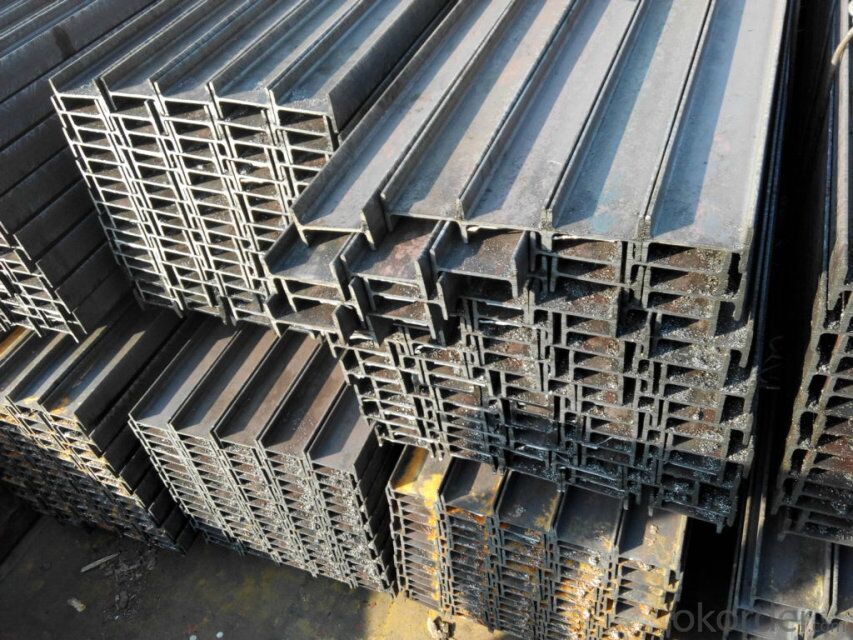
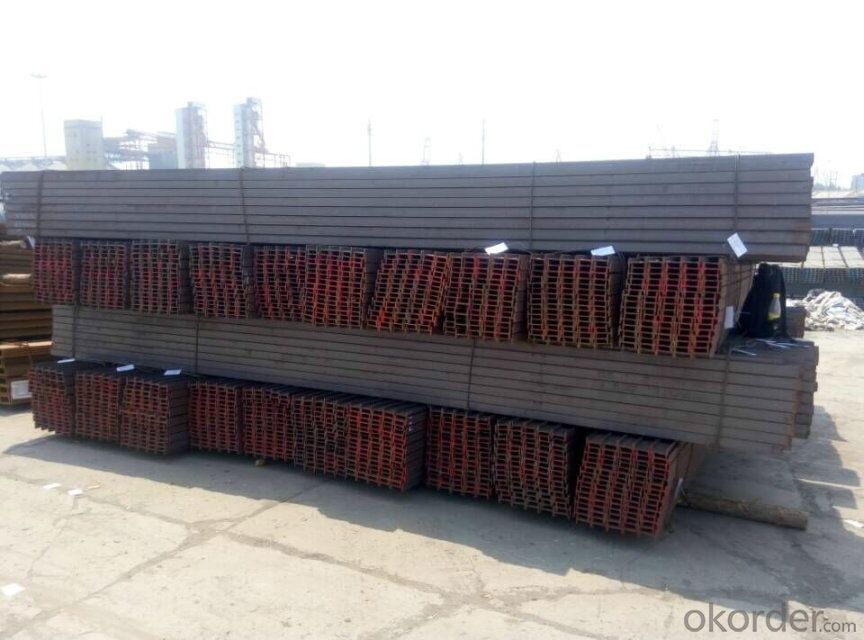
- Q: What is the purpose of a camber in a steel I-beam?
- The purpose of a camber in a steel I-beam is to counteract the natural deflection that occurs when the beam is loaded, ensuring that it remains straight and level under the anticipated load.
- Q: What are the different types of load tests conducted on Steel I-Beams?
- There are several types of load tests conducted on steel I-beams to evaluate their structural integrity and performance. These tests can provide critical information about the beam's strength, stiffness, and resistance to various types of loads. The different types of load tests commonly conducted on steel I-beams include: 1. Ultimate Strength Test: This test aims to determine the maximum load a steel I-beam can withstand before failure or collapse. It helps in assessing the beam's ultimate strength and ensures that it can safely support the intended loads. 2. Yield Strength Test: This test determines the load at which the steel I-beam begins to deform plastically or permanently. It helps in understanding the beam's yield strength, which is crucial for designing structures and ensuring their safety. 3. Deflection Test: This test measures the amount of deflection or bending that occurs in the steel I-beam under a specific load. It allows engineers to evaluate the beam's stiffness and its ability to resist excessive deflection, which is essential for maintaining the structural integrity of a building. 4. Fatigue Test: This test assesses the endurance limit of a steel I-beam by subjecting it to repeated loading cycles. It helps determine the beam's resistance to fatigue failure, which is crucial in applications where cyclic loads or vibrations are expected. 5. Impact Test: This test evaluates the steel I-beam's ability to absorb sudden impact loads without fracturing or excessively deforming. It simulates real-life scenarios where the beam may encounter unexpected loads, such as accidental impacts or dynamic forces. 6. Buckling Test: This test examines the steel I-beam's resistance to buckling or sudden lateral instability under compressive loads. It helps in determining the beam's critical buckling load and ensuring its stability in vertical or horizontal applications. These different types of load tests provide valuable insights into the performance characteristics of steel I-beams and assist engineers in designing safe and efficient structures. By conducting these tests, the structural integrity and load-bearing capacity of the beams can be accurately assessed, ensuring the overall safety and reliability of the constructed infrastructure.
- Q: The tunnel arch sprayed concrete I-beam to dismantle after?
- I-steel and arch initial support is not removed.But if the temporary arch by CD method or CRD method need to be removed.
- Q: What are the different types of steel finishes available for steel I-beams?
- Steel I-beams come in several different types of finishes, each with its own advantages and appearance. The most common finishes for I-beams are as follows: 1. Mill finish: This is the standard finish straight from the mill, with a rough and unfinished surface. It is typically gray and is suitable for applications where appearance is not a priority. Mill finish is often used in structural applications where the steel will be covered or painted. 2. Hot-dip galvanized: To achieve this finish, the steel I-beam is immersed in molten zinc, creating a protective coating that prevents corrosion. Hot-dip galvanized steel I-beams are durable, long-lasting, and ideal for outdoor applications, as they can withstand harsh weather conditions and exposure to chemicals. 3. Powder coated: This finish involves applying a dry powder to the steel I-beam, which is then heated and cured to create a durable and smooth finish. Powder coated steel I-beams are available in various colors and offer excellent resistance to corrosion, abrasion, and chemicals. This finish is often used in architectural and decorative applications, where aesthetics are important. 4. Painted: Steel I-beams can also be painted with different types of paint, such as epoxy, enamel, or acrylic. Painting provides an extra layer of protection against corrosion and can enhance the appearance of the steel. Painted finishes are commonly seen in indoor applications, such as commercial buildings or residential structures. 5. Stainless steel: Stainless steel I-beams provide a unique finish that is resistant to corrosion, staining, and rust. This type of steel finish is commonly used in environments where hygiene and cleanliness are crucial, such as food processing plants, hospitals, or pharmaceutical facilities. When selecting the appropriate steel finish for I-beams, it is important to consider the specific requirements of your project, including the intended use, environment, and aesthetic preferences. Consulting with a steel supplier or engineer can help ensure that you choose the right finish for your application.
- Q: How do steel I-beams perform in areas with high levels of air pollution?
- Steel I-beams perform well in areas with high levels of air pollution. The inherent strength and durability of steel make I-beams resistant to corrosion caused by pollutants. Additionally, the protective coatings applied to steel structures provide an extra layer of defense against air pollutants, ensuring the longevity and structural integrity of I-beams in such environments.
- Q: Are steel I-beams suitable for earthquake-prone regions?
- Steel I-beams are indeed suitable for earthquake-prone regions. They have been extensively used in construction in such areas due to their exceptional strength and resilience. Steel is a material known for its high tensile strength, which allows I-beams to withstand the lateral forces and vibrations caused by earthquakes. The design of steel I-beams also contributes to their suitability for earthquake-prone regions. These beams are specifically engineered to distribute and dissipate seismic forces, reducing the risk of structural failure during an earthquake. Additionally, their flexibility allows them to bend and flex during seismic activity, which helps absorb and dissipate the energy generated by the earthquake. Moreover, steel I-beams offer several advantages over other structural materials in earthquake-prone regions. They are lightweight, making them easier to handle and transport, and they have a high strength-to-weight ratio, which means they can support heavy loads without being excessively bulky. This makes them ideal for constructing earthquake-resistant buildings and infrastructure. Furthermore, steel is a highly durable material that does not degrade over time, making it a reliable choice for long-term use in seismic zones. It is also resistant to corrosion, which is essential in areas where seismic events can cause water damage to structures. Overall, steel I-beams have proven to be a reliable and effective solution for construction in earthquake-prone regions. Their strength, flexibility, and durability make them suitable for withstanding the forces generated by earthquakes, ensuring the safety and stability of buildings and infrastructure in these areas.
- Q: What are the standard dimensions for steel I-beams?
- The standard dimensions for steel I-beams vary depending on the specific design and load requirements, but commonly range from 4 inches to 36 inches in height and from 2.66 inches to 12 inches in width. The length of the beam is typically customized based on the project's specifications.
- Q: Are steel I-beams suitable for residential basement walls?
- Depending on the specific circumstances and requirements of the project, residential basement walls can potentially utilize steel I-beams. Steel I-beams possess numerous benefits, including a high strength-to-weight ratio, durability, and resistance to various forces like bending, shearing, and compression. The ability of steel I-beams to support heavy loads is one of their primary advantages when used in basement walls, making them particularly suitable for areas with expansive soil or high water tables. They effectively withstand the lateral pressure exerted by the soil, thus preventing basement wall failure, a common concern in residential construction. Furthermore, steel I-beams offer an added level of fire protection compared to materials such as wood, as they are non-combustible. This feature enhances the safety of residential basements, especially in terms of potential hazards like fire or smoke spreading from adjacent spaces. However, before opting for steel I-beams in residential basement walls, several factors need consideration. Firstly, the cost of steel I-beams may exceed that of other materials, which can impact the overall project budget. Secondly, their installation process may necessitate specialized equipment and skilled labor, potentially increasing construction complexity and time requirements. Additionally, steel I-beams may require adequate insulation to prevent thermal bridging, as metal conducts heat more readily than materials like wood or concrete. Proper insulation ensures a comfortable temperature in the basement and reduces energy consumption. In conclusion, steel I-beams can be a suitable choice for residential basement walls due to their strength, durability, and fire resistance. Nevertheless, it is vital to assess factors such as cost, installation complexity, and insulation requirements before making a final decision. Seeking guidance from a structural engineer or professional contractor can provide valuable insight into whether steel I-beams are the optimal choice for a specific residential basement project.
- Q: Can steel I-beams be used in coastal or marine environments?
- Yes, steel I-beams can be used in coastal or marine environments. However, it is important to consider the potential effects of corrosion due to saltwater exposure. To mitigate this risk, the I-beams should be properly coated or protected with materials that are resistant to corrosion, such as galvanization or specialized coatings. Regular inspections and maintenance are also necessary to ensure the structural integrity of the steel I-beams in coastal or marine environments.
- Q: Are steel I-beams prone to rust or corrosion?
- Yes, steel I-beams are prone to rust or corrosion if they are not properly protected or maintained.
Send your message to us
Steel I-Beam with Good Quality and Price from China
- Loading Port:
- Tianjin
- Payment Terms:
- TT OR LC
- Min Order Qty:
- 25 m.t
- Supply Capability:
- 10000 m.t/month
OKorder Service Pledge
OKorder Financial Service
Similar products
Hot products
Hot Searches
Related keywords
